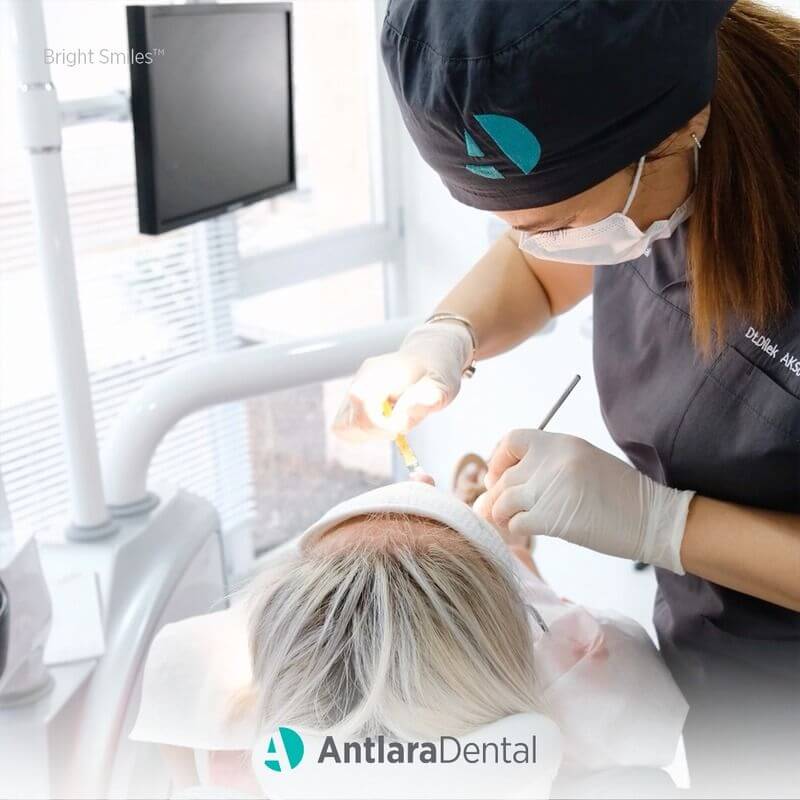Among minimally invasive aesthetic dentistry methods, laminate veneers top the list. The laminate veneers need to be bonded to the tooth enamel. So, the enamel must not be worn away more than 0.5 mm during the treatment.
Dental veneers are available in different thicknesses depending on the material used. In most cases, they require abrading all around the tooth over the enamel and from the edges.
The main difference between dental laminates vs. veneers can be seen in their thickness. Still, different types of veneers have different biocompatibility, light transmission, opacity, proximity to natural teeth, and price.

What is Dental Veneer?
In dentistry, veneers repair teeth fractures, remove stains, and correct minor defects like misalignments. Veneers have been typically produced in five different types.
Zirconia Veneer
Zirconia veneers are made by treating zirconia with high heat. The most important reasons for their preference are their biocompatibility and durability.
All-Porcelain Veneers
These veneers are entirely made of porcelain. Laminate teeth veneer is a type of all-porcelain veneer. However, not all All-Porcelain veneers are laminate veneers.
Porcelain Fused to Metal Veneer
In these veneers, a metal layer is placed on the inside of the porcelain veneer using different techniques.
Empress Veneer
They are obtained by strengthening the porcelain with chemicals such as lithium disilicate. Most commonly known as E-max veneer, which is manufactured by Ivoclar Vivadent.
Composite Veneer
Essentially, composite bonding is a type of dental adhesive used to bond crowns and veneers. It is called composite veneers when these adhesives are used to make the veneers. They are used to fix small fractures.

What is Dental Laminate?
Laminate veneers are dental veneers made entirely of porcelain with a 0.1 mm thickness resembling a contact lens. Due to their porcelain construction, they possess all porcelain properties. These features are;
- They are very thin.
- They are minimally invasive.
- They have high biocompatibility.
- They have the closest color tone to natural teeth.
- A high-quality aesthetic appearance can be obtained thanks to their high light transmittance.
- With the help of the bonding material, the desired level of opacity can be achieved.
The list of laminate teeth veneer properties can be extended. However, they are famous for two main reasons. They are minimally invasive and offer high-quality aesthetic results. In this respect, laminate veneers are the most important dental material that dentists apply for anterior teeth in smile designs.
Dental Veneers vs. Dental Laminates
Taking a closer look at laminate veneers, which are very thin and perform better than expected, below, we compare laminate vs. veneer teeth from all aspects.
Price
A variety of brands and types of dental veneers are available, each at a different cost. Dental laminate costs less than other dental veneers. Among dental veneers, E-Max veneers are the most expensive. It is followed by zirconia veneers. Composite veneers are the cheapest among veneers.
Material
Laminates are veneers made of 100% porcelain. Lithium disilicate glass ceramics are used in the production of E-maxes. Zirconia veneer is obtained by high heat treatment of zirconium material.
Composite veneers are obtained by applying composite adhesive to the tooth surface without the need for invasive preparation.
Treatment Duration
Since laminates don’t require a lot of abrasion from the tooth surface, the treatment duration is very short, around 20 minutes on average. However, the treatment period is also longer, especially in veneers such as zirconia veneers, where the tooth circumference must be eroded 360 degrees. In composite veneers, the treatment time is shorter than in laminates.

Appearance
Laminate veneers are the most aesthetically pleasing veneers. The biggest reason for this is that they have high light transmittance.
Some dentists claim that zirconia looks more natural due to its high opacity values. This information is completely misleading. Most dentists agree that zirconia veneers look artificial and unnatural compared to laminate veneers. This is why zirconia veneers are most commonly used on posterior teeth.
Thickness
Dentists associate laminated veneers to contact lenses. Their 0.1 mm thickness allows them to abrade the tooth surface by 0.2-0.4 mm. As far as this is concerned, other dental veneers are very merciless. Zirconia veneers may require up to 1 mm of abrasion. Porcelain Fused to Metal veneers requires abrasion of 0.7-1 mm.
It is possible to obtain composite veneers without having to remove any tissue from the enamel. The composite veneers may be a good option if you are not concerned about the short period of use.
Durability (Lifespan)
Veneers that give the best results for durability are PFM (Porcelain Fused to Metal) veneers. It is possible to expect a lifespan of more than 20 years with these veneers. However, although these veneers are resistant to breakage, there is a high possibility of discoloration on them due to the porcelain coating on their outer surfaces.
Furthermore, they are not preferred for anterior teeth because they cause gray color formation in the gums due to the metal in their inner parts. On the other hand, Zirconia veneers are very durable, besides their soft tissues and biocompatibility. However, they are also not for anterior teeth because of their thick structure and lack of desired light transmittance.
Emax veneers are veneers with a thickness of 0.3 mm. Despite their thin structure, they are highly durable veneers that are expected to survive 15 to 20 years. And they are a good choice for anterior tooth restorations.
Laminate veneers have a durability of over 15 to 20 years despite their thin structure. Their biggest flaw is the development of microscopic cracks caused by the structure of the porcelain after 10 years, which then result in discolorations.
Which Dental Treatment is Best?
The basic principle in dental treatments is to achieve the same result with minimally invasive methods. For example, while a dentist recommends implants or crowns for a smile design, the other may provide you with the same effect by applying orthodontic procedures and veneer treatments without pulling your tooth.
The most important thing for you as a patient is to find a dental clinic with quality and good experience. Finding a dental clinic with an experienced staff of cosmetic dentists, orthodontists, and periodontists works better in complex dental treatments.
The type of treatment you receive depends on your conditions, expectations, mouth structure, profession, social life, and face shape.
